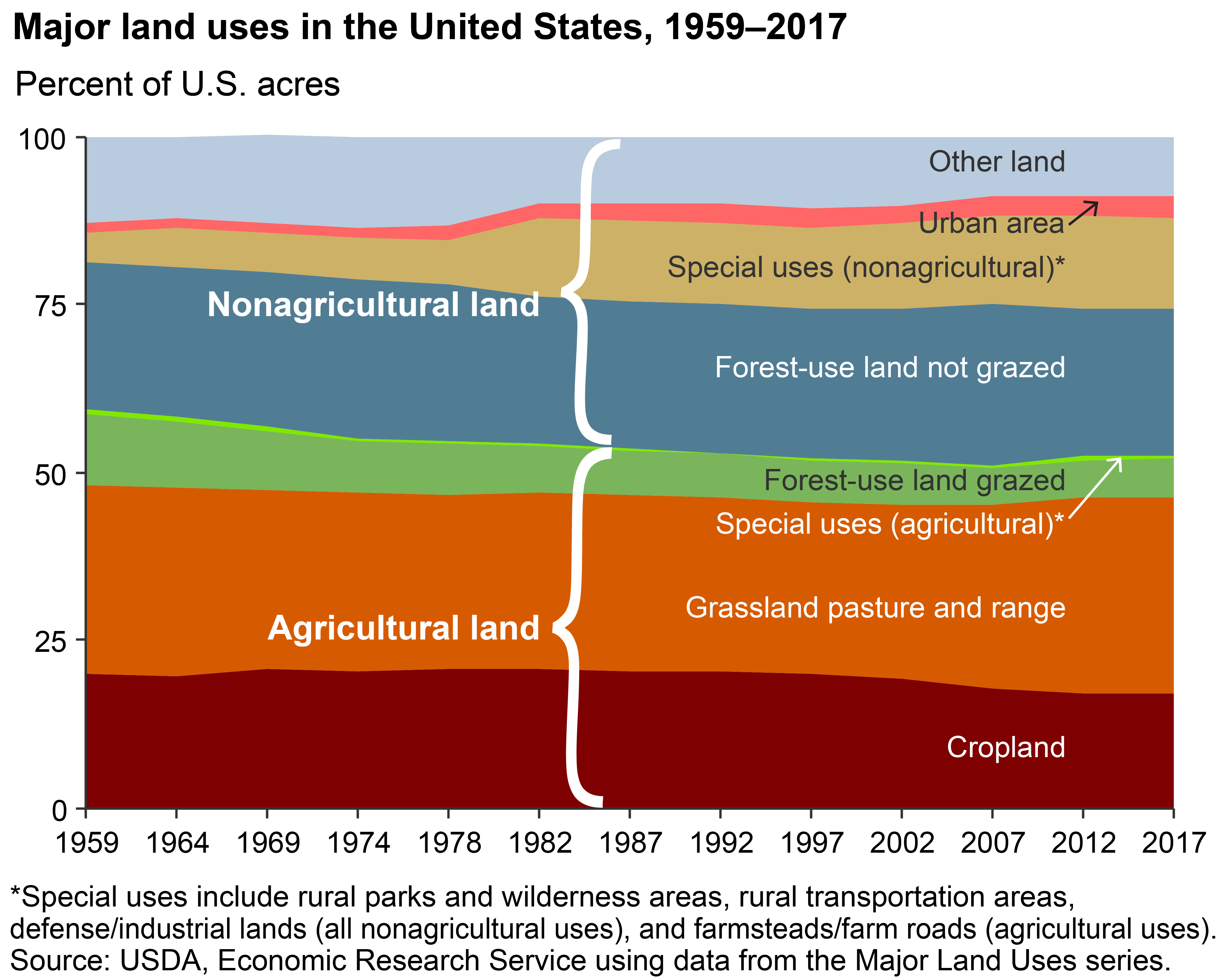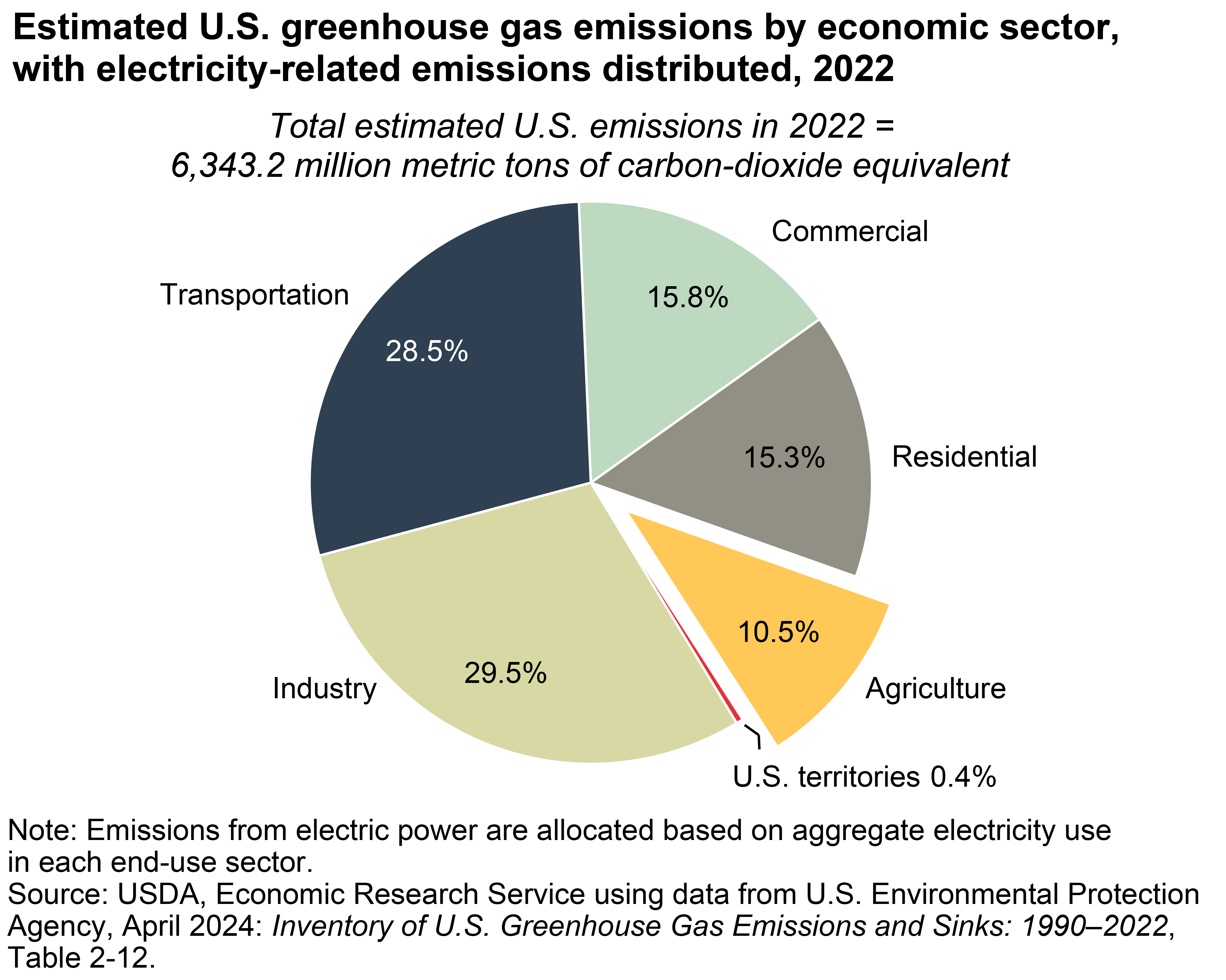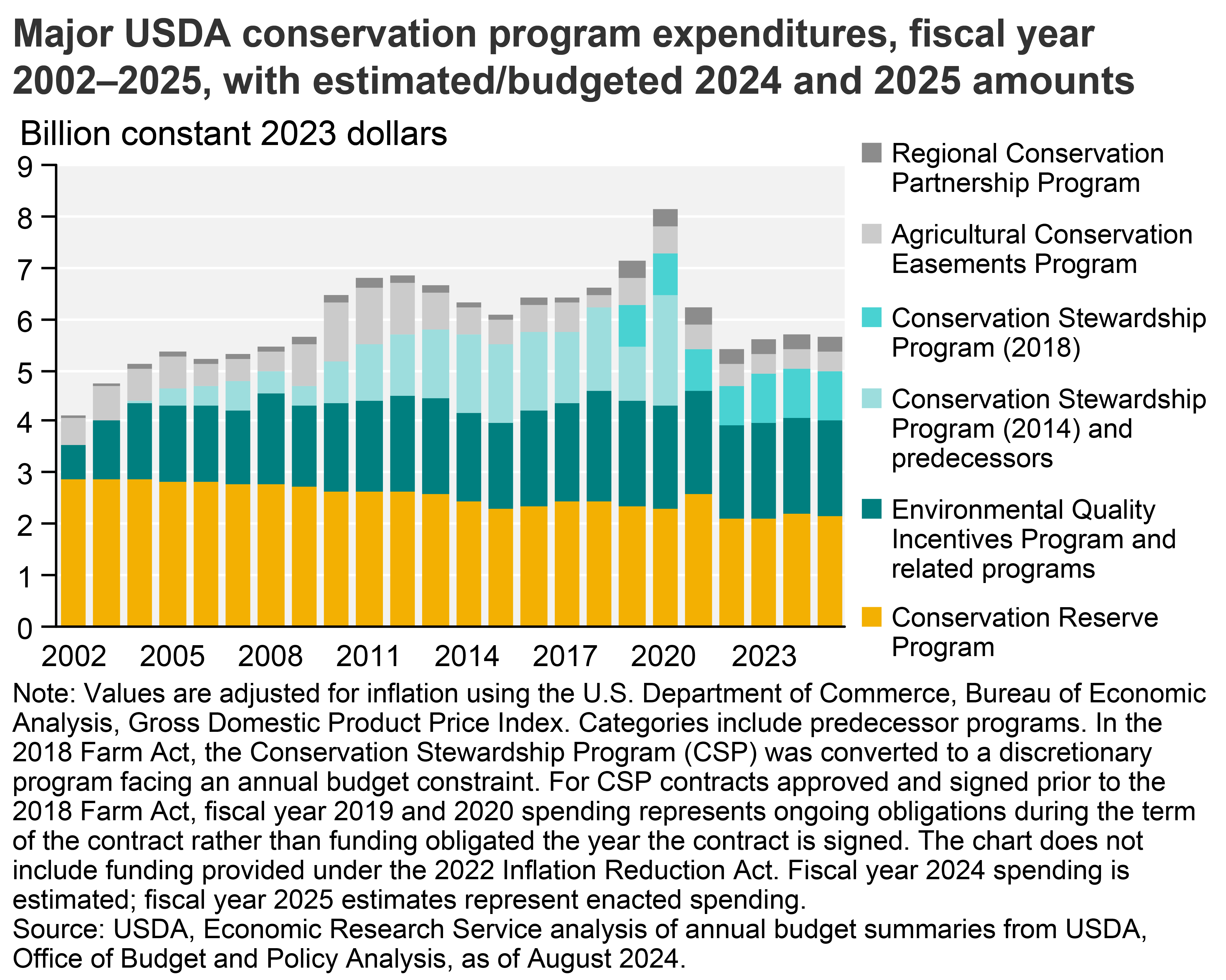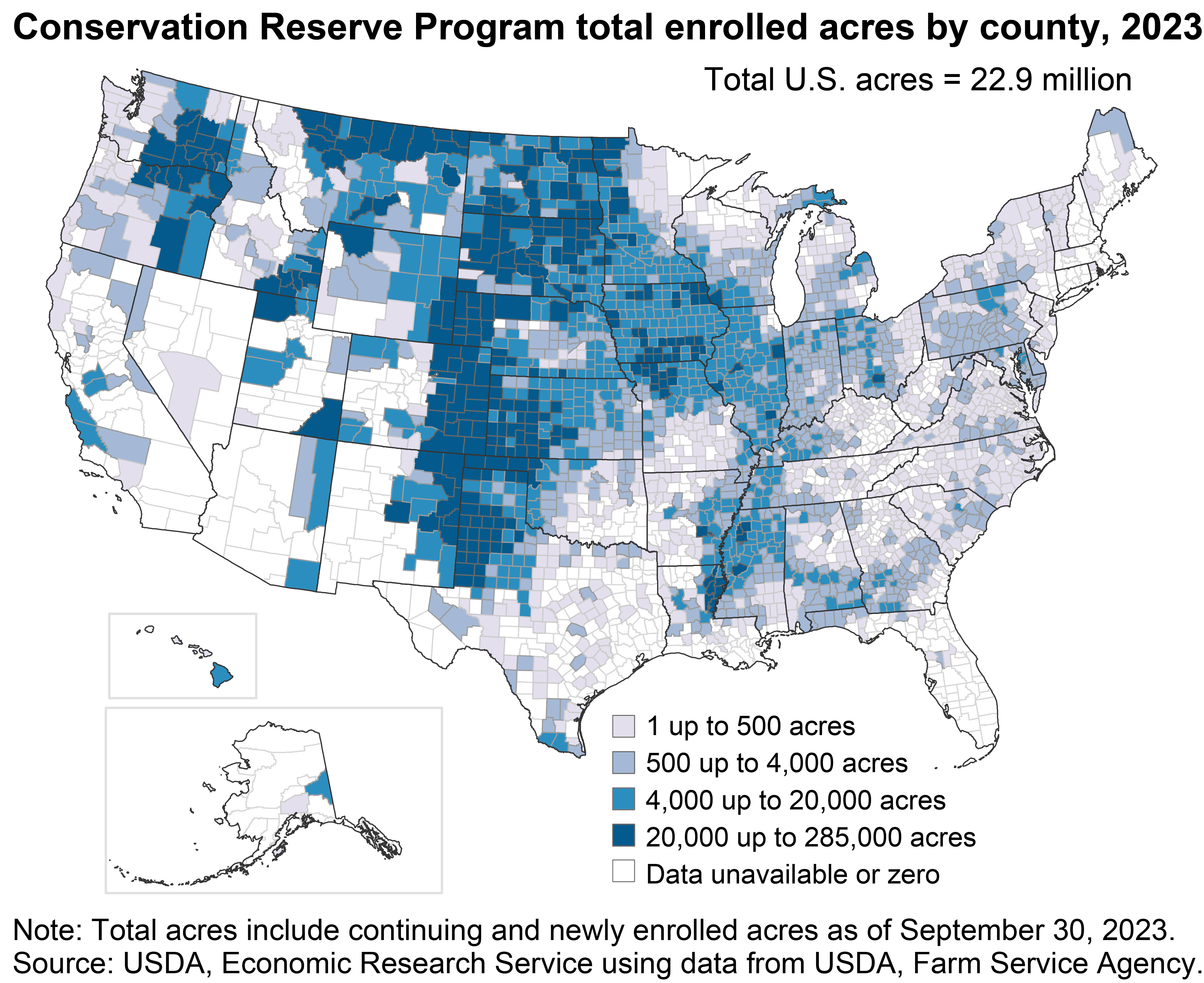U.S. agricultural production relies heavily on the Nation’s land, water, and other natural resources, and has a direct impact on the quality of the Nation’s natural environment. Over the years, improvement in the sector’s productive use of resources has reduced the amount of land and water needed per unit of output, and concerted public and private efforts have improved the sector’s environmental performance.
Land and Natural Resources
- Updated: 1/8/2025
- Contact: Website Administrator
-
Agricultural land uses account for over half of the U.S. land base
- by Clayton P. Winters-Michaud
- 9/13/2024
U.S. land area amounts to 2.26 billion acres, with over half or nearly 1.2 billion acres in agricultural uses. The share of the land base in agricultural use declined from 59 percent in 1959 to 53 percent in 2017, the latest year for which comprehensive national data are available. Gradual declines have occurred in cropland, while grazed forestland has decreased more rapidly. In 2017, 390 million acres of agricultural land were in cropland (a 15-percent decline from 1959); 659 million acres were in grassland pasture and range (4 percent more than in 1949); 132 million acres were in grazed forestland (46 percent less than in 1959); and 6 million acres were in farmsteads and farm roads (47 percent less than in 1959). Urban land, while it represents a relatively small share of the U.S. land base, has nearly tripled in area since 1959 to 74 million acres. -
The U.S. agricultural sector, including its electricity consumption, accounted for an estimated 10.5 percent of U.S. greenhouse gas emissions in 2022
- by Ron Sands
- 5/13/2024
The U.S. Environmental Protection Agency estimated that the agricultural sector, including its electricity consumption, accounted for 10.5 percent of U.S. greenhouse gas emissions in 2022. Globally, carbon dioxide emissions are the largest contributor to climate change. However, the emissions profile for agriculture differs from that of the overall economy. In agriculture, crop and livestock activities emit nitrous oxide and methane, mainly from fertilizer application, enteric fermentation (a normal digestive process in animals that produces methane), and manure storage and management. Between 1990 and 2022, estimated greenhouse gas emissions from the U.S. agricultural sector have increased by approximately 5.1 percent. During the same period, estimated total U.S. greenhouse gas emissions have declined by 3.0 percent. -
USDA conservation funding encompasses a variety of programs
- by Kate Binzen Fuller
- 10/24/2024
USDA provides financial and technical assistance to agricultural producers through voluntary conservation programs to address natural resource concerns. While the 2002 and 2008 Farm Acts each increased conservation spending, the 2014 and 2018 Farm Acts held total budgeted spending largely level, at an average of between $6.0 and $6.5 billion per year in 2023 dollars. Actual spending (shown in the chart) has varied more year to year. Current major funded USDA programs include the Regional Conservation Partnership Program, which assists partners addressing problems on a regional or watershed scale through methods including land retirement, easements, and conservation practices. The Agricultural Conservation Easement Program provides long-term or permanent easements for preservation of wetlands and the protection of agricultural land from commercial or residential development. The Conservation Stewardship Program provides 5-year contracts that pay producers to maintain or expand existing conservation activities. The Environmental Quality Incentives Program provides financial assistance to farmers to employ conservation practices, such as conservation tillage, and planting cover crops. The Conservation Reserve Program provides 10‒15-year contracts that pay producers to restrict agricultural land use in ways that promote ecosystem services. This chart does not include funding provided under the 2022 Inflation Reduction Act (IRA), which provided additional funding for several major conservation programs. Estimated IRA spending totaled approximately $3.1 billion in fiscal year 2024 and enacted IRA funding totaled approximately $5.7 billion in fiscal year 2025. -
The Conservation Reserve Program (CRP) is regionally concentrated
- by Bryan Pratt
- 2/16/2024
USDA’s Conservation Reserve Program (CRP) covered about 22.9 million acres of environmentally sensitive land at the end of fiscal 2023, with an annual budget of roughly $1.8 billion (making it USDA’s largest single conservation program in terms of spending at that time). Enrollees receive annual rental and other incentive payments for taking eligible land out of production for 10 years or more. Program acreage tends to be concentrated on marginally productive cropland that is susceptible to erosion by wind or rainfall. A large share of CRP land was in the Plains (from Texas to Montana), where rainfall is limited and much of the land is subject to potentially severe wind erosion. Smaller concentrations of CRP land were found in eastern Washington and Oregon, southern Iowa, northern Missouri, the Mississippi Delta, and southeastern Idaho and northwestern Utah.






